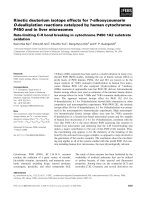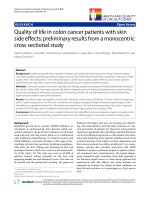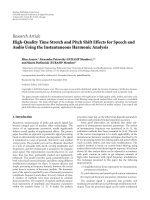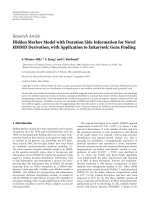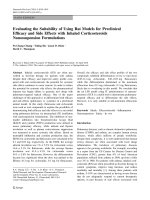Side effects for IPM
Bạn đang xem bản rút gọn của tài liệu. Xem và tải ngay bản đầy đủ của tài liệu tại đây (90.03 KB, 4 trang )
chlorfluazuron
chromafenozide
cyromazine
diflubenzuron
diofenolan
epofenonane
fenoxycarb
Side effects
SP
population
adult
Amblyseius swirskii
SP
1
1
nymph
egg
persistence
population
Transeius montdorensis
persistence
0w
DR
SP
SP
1
1
1
flucycloxuron
flufenoxuron
halofenozide
hexaflumuron
hydroprene
kinoprene
lufenuron
methoprene
methoxyfenozide
SP
SP
SP
SP
SP
SP
SP
SP
3
1
2
1
1
Side effects
population
adult
Amblyseius swirskii
1
1
1
1
1
persistence
0w
0w
population
2
nymph
egg
Transeius montdorensis
persistence
novaluron
penfluron
tebufenozide
teflubenzuron
triflumuron
SP
SP
SP
Side effects
SP
population
Amblyseius swirskii
1
adult
2
nymph
2
egg
persistence
population
Transeius montdorensis
persistence
2
1
1
0w
In this publication Koppert has presented the most accurate data about side effects on natural enemies and bumblebees as known at time of publication. When using pesticides, the legal directions should always
be closely followed. Since the conditions of use of pesticides are outside our control, Koppert cannot guarantee that certain results will be achieved and cannot accept liability for any damaging consequences
which may arise from the use of data presented in this publication.
Legend
Natural enemies
Application methods
1
= harmless or only slightly harmful < 25% reduction
DR
2
= moderately harmful 25 - 50% reduction
DUS = Dust
3
= harmful 50 - 75% reduction
FOG = Fog
4
= very harmful > 75% reduction
GRA = Granulate
= effect/persistence unknown
LVM = Low Volume Mist
= Drench
Persistence
NN
= Unknown
d = days, w = weeks
O
= Various
Bumblebees
PA
= Paint
= no action
SK
= Soak
= cover
SM
= Smoke
= remove
SP
= Spray
= incompatible
SPK = Sprinkle
TMX = Tankmix
WTR = Seed treatment


